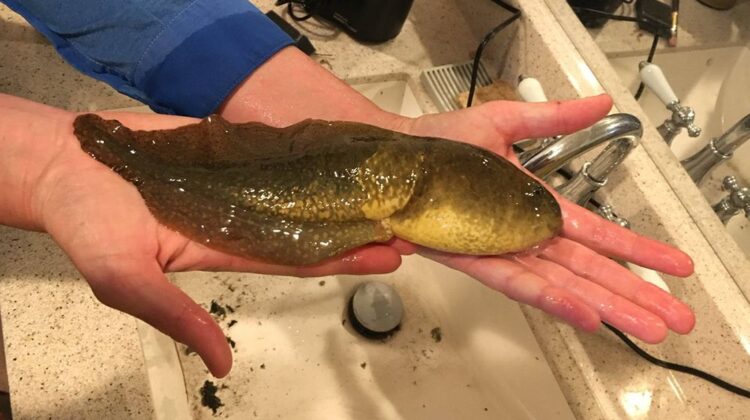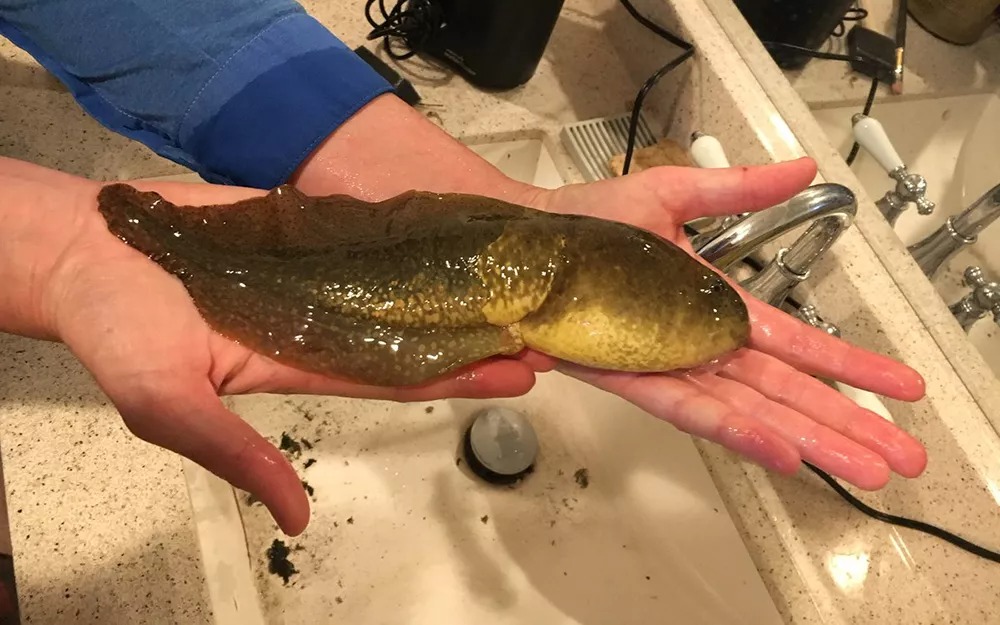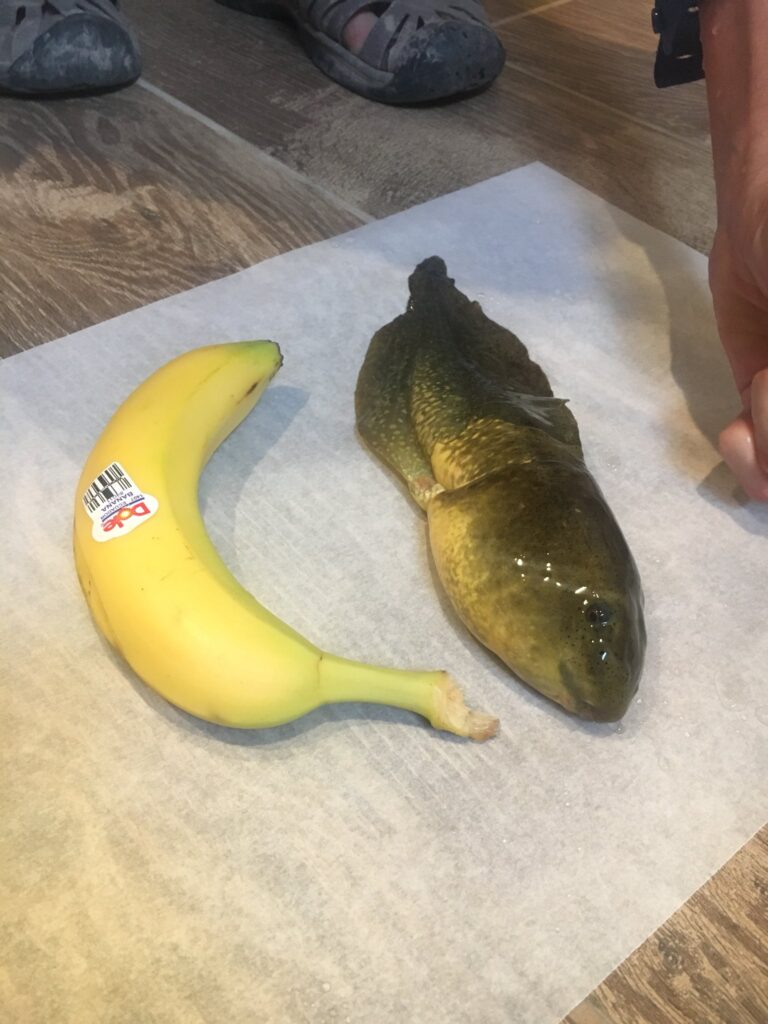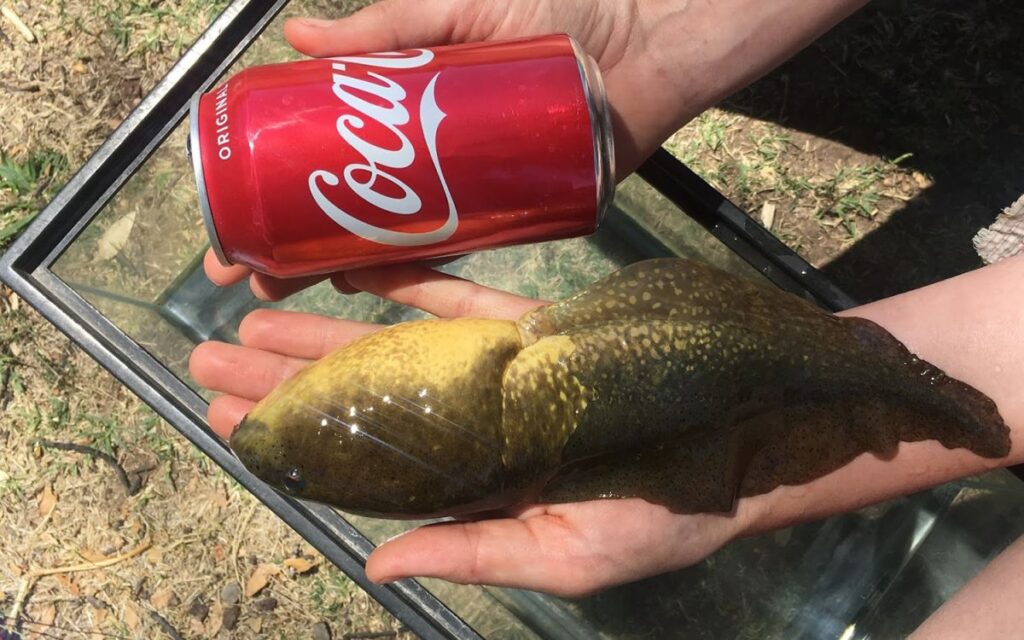
And it’s still growing.
An astonishing discovery has been made in the wild—an enormous tadpole that surpasses the size of a can of Coke. Biologists stumbled upon this colossal swimmer in a shallow pond located in southeastern Arizona while they were removing invasive American bullfrogs. The biologists, working in collaboration with the Southwestern Research Station (SWRS) run by the Science Department at the American Museum of Natural History in New York City, found themselves face to face with a tadpole of epic proportions.
The encounter occurred when a volunteer was probing a mostly drained pond and unexpectedly encountered an oversized bullfrog tadpole. Astonished by its size, the volunteer initially mistook it for a fish, as noted by herpetologist Earyn McGee, a doctoral candidate at the University of Arizona and a scientist at SWRS, in a blog post on July 23.

This remarkable tadpole, affectionately named “Goliath” by the biologists, quickly garnered attention after McGee shared photos of the prodigious creature on social media. Within days, the photos amassed over 13,000 likes and numerous intrigued comments. Goliath stands out among other American bullfrog tadpoles due to its remarkable size, which biologists believe may be the result of a hormone imbalance. The researchers at SWRS are currently investigating this unusual condition, hoping to understand its cause and implications.
McGee, in an email to Live Science, mentioned that previous studies have documented tadpoles of similar magnitudes, but Goliath surpasses them all. However, contrary to popular belief, a tadpole’s excessive size does not necessarily translate into advantages. As McGee explained, Goliath’s respiratory and circulatory systems may struggle to keep up with his ongoing growth. Nonetheless, being a gigantic tadpole could prove beneficial if food sources are scarce in a small pond, as Goliath would have the advantage of being able to consume more than his smaller counterparts.

The American bullfrog, known for its impressive size, is the largest species of frog in North America. These frogs can grow to lengths of 8 inches (20 centimeters) or more and weigh up to 1 pound (0.5 kilograms). Tadpoles, on the other hand, usually reach lengths of about 6 inches (15 cm), according to the U.S. Fish and Wildlife Service (FWS). Native to central and eastern states, American bullfrogs were introduced to the southwest in the 1900s due to the high demand for frog legs as food. Today, they can be found throughout all lower 48 states.
Scientists at SWRS carefully transported Goliath back to their research station and placed him in a tank for further examination. To give a sense of Goliath’s substantial size, McGee shared photos comparing him to a banana and a can of Coke. Precise measurements, growth rate data, feeding habits, and behavioral observations are currently being collected by the scientific team for a forthcoming peer-reviewed study, as stated in McGee’s tweet.
Unfortunately, Goliath, the mighty tadpole titan, passed away in 2019, as revealed in a tweet by Earyn McGee on May 26, 2020. However, his legacy lives on through ongoing research conducted by scientists at the Southwestern Research Station in Arizona. By studying Goliath’s preserved remains, researchers hope to gain a deeper understanding of his extraordinary size and unique morphology.

The story of Goliath, the gigantic tadpole, serves as a testament to the wonders of the natural world and reminds us that there is still much to discover and explore, even in our own backyards.

Leave a Reply